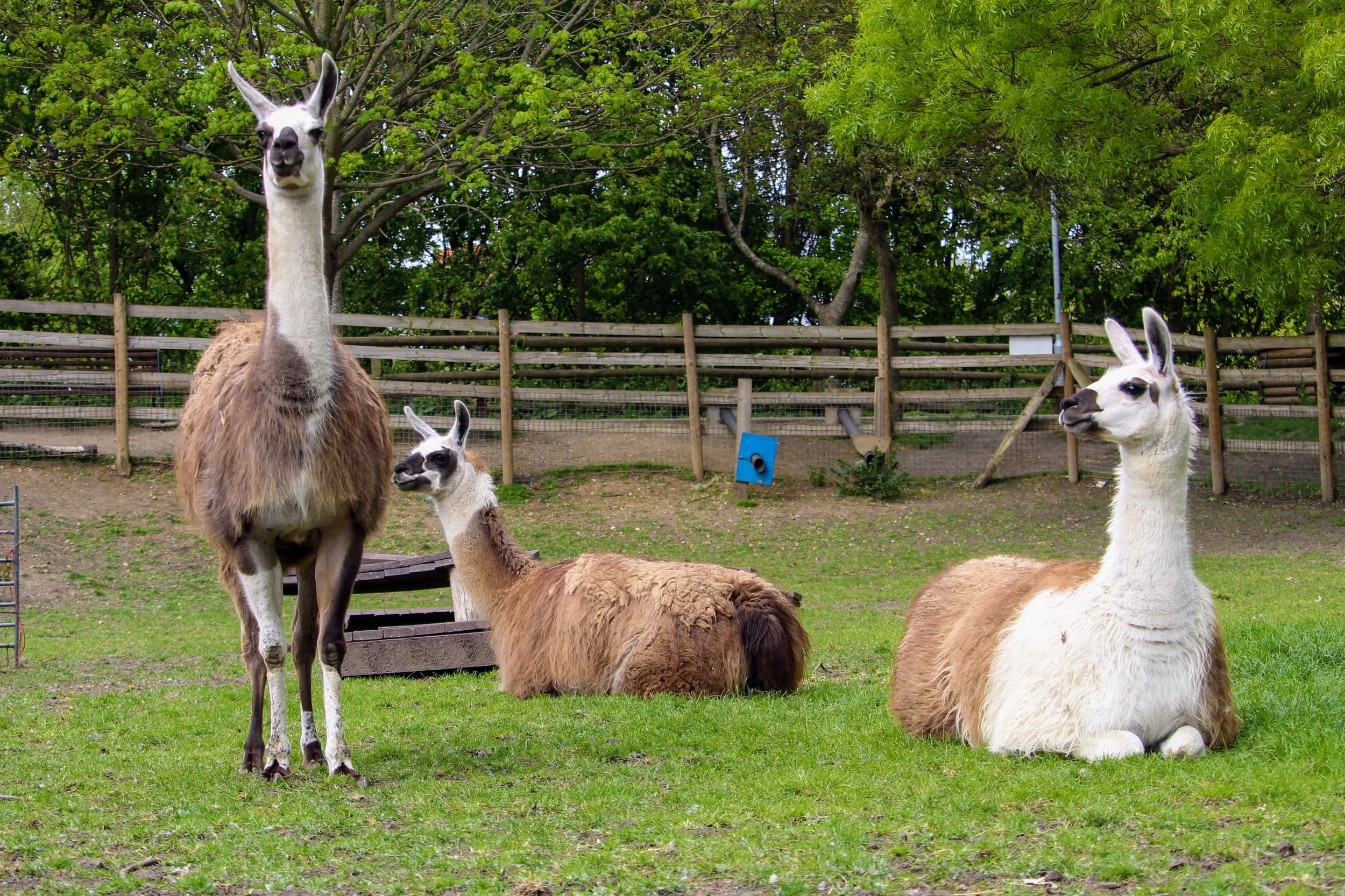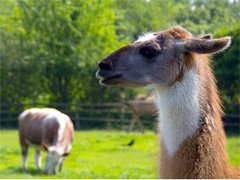
LLAMAS
Llamas
Both llamas and alpacas are domestic camelids from South America. Like camels, llamas and alpacas have peculiar bumps on the soles of their feet, and together they make up the group Tylopoda, which means "bump-footed". In fact, camels and llamas have been artificially crossed to create the cama.
Llamas (Lama glama) were domesticated in the Andean Highlands of Peru 4,000–5,000 years ago, and are among the oldest domestic animals in the world. They are extremely intelligent, very beautiful, and graceful, carrying themselves with elegance. Their two-toed foot with its leathery bottom pad gives them great sure-footedness. Occasionally they spit to ward off a threat, so be nice to them.
The Llama is used as a beast of burden in the Andes of South America. Adult llamas stand about four feet (1.2m) tall at the shoulder, five feet (1.5m) in length, and has a neck almost two feet (60cm) long. Llamas have erect ears; a short, bushy tail; and slender legs. Their thick, soft hair is white, brown, or black, or a combination of these colors.
Llamas have long been used to carry cargo. The llama can carry about 100 pounds (45kg) for 12 to 15 miles (19 to 24km) a day. Llamas are valued for their meat and for their hide, which is made into leather products such as sandals. Their soft underfur is often combined with alpaca fur, and the yarn is woven into clothing and blankets; the tough outer hairs are braided into rope.
Llamas are also used as flock guards as they are instinctively alert and aware of their surroundings. These qualities mean they are quick to notice intruder and draw attention to an them by making a startling alarm call and may even toward an intruder, chase, paw at, or kick it. Find out more about alpacas from British Llama Society.

